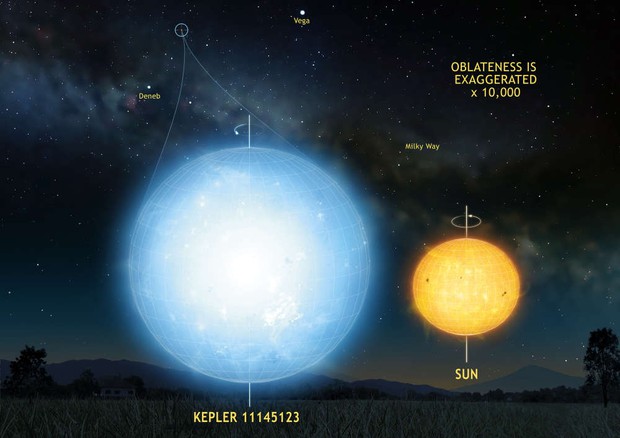The planets or stars in the universe are spherical, but not perfect. And now such a near perfect star has been found.
The Sun, Earth, and the planets and stars in the universe are all spherical. However, these spheres are not perfect. If projected onto a 2-dimensional surface, we will never get a full circle.
Like the Earth, our equator is 43 km longer than the Prime Meridian, so the Earth is actually slightly distorted.
In general, all planets or stars have some distortion, less or less distortion. And recently, after centuries, experts found a star that is classified as “the roundest” in the current universe.
Specifically, an astronomical group of international scientists found a star 5,000 light years away from us. It is a star named KIC 11145123 – or Kepler 11145123, with the error between the equator and the meridian in the polar region is only 3 km – the smallest of all celestial bodies in this universe.
The team led by Professor Laurent Gizon (Max Plank Institute) used a technique called asterosmology. Similar to how geologists find out what’s going on inside the Earth, asterosmology allows experts to track how the interior of stars is at a long distance.
Professor Gizon said: “The periodic elasticity of a star can be determined by its luminosity. The frequency of the oscillation can tell us the star’s density, age and orbit. Stars. Now, we know more about their shapes.
According to the professor, this star spins very slowly, and this is one of the reasons that makes it so round almost perfectly.
KIC 11145123 was selected for research due to its extremely long oscillation frequency, which helps experts to calculate its size accurately. However, this is not the only star with an allowable frequency. Gizon said he intends to use the same method to track a number of planets on upcoming NASA missions.



